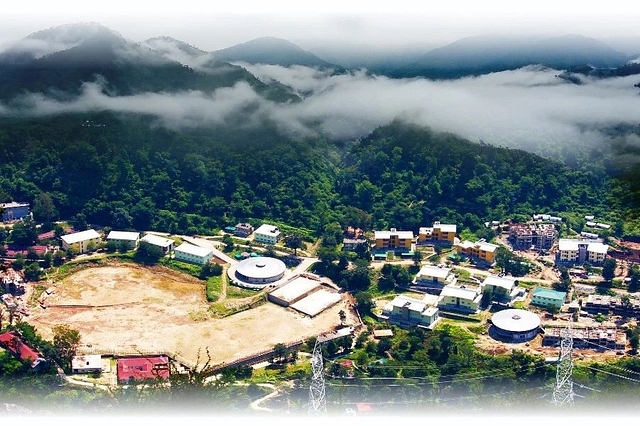
Clean Energy: IIT Mandi Researchers Develop Materials That Use Sunlight To Produce Hydrogen From Water
Indian Institute of Technology Mandi on Monday (6 January) said its researchers have developed new materials that can use sunlight for the production of hydrogen from water.
This collaborative research work by IIT Mandi and Yogi Vemana University in Andhra Pradesh has been published in American Chemical Society (ACS) Applied Energy Materials journal.
"With concerns of dwindling fossil fuel reserves and environmental issues associated with their use, there has been an impetus to develop alternative, safe fuels. Hydrogen gas, with its high energy yield and eco-friendliness has been identified as a potential energy vector that can herald a new hydrogen-based economy," said Venkata Krishnan, Associate Professor, School of Basic Sciences, IIT Mandi.
"The catch with hydrogen economy is that the gas is now largely obtained from fossil fuels by petroleum and natural gas steam reforming processes, which does not help with the problem we set out solving - finding alternatives to fossil fuels," Krishnan said in a statement.
Water, the simplest chemical compound known to man, is made of two hydrogen atoms and one oxygen atom and is logically a good source of hydrogen.
However, splitting water into hydrogen and oxygen is not easy and is energy intensive. It has been known for decades that light can assist in the splitting of water into its constituent hydrogen and oxygen atoms.
Nature already uses light from the sun to bring about all kinds of chemical conversions that provide us today with the air we breathe and the food we eat.
Mimicking photosynthesis - the use of light for chemical reactions - has been one of the Holy Grails of applied chemistry and there has been a constant quest for specialised chemicals, called catalysts, that can take the energy of the light to the water to split it, much like the chlorophyll that does it effortlessly in nature.
For a long time, platinum has been used as catalyst for photochemical water splitting, but given the cost of platinum, solar hydrogen generation has been out of practical reach.
The researchers have developed a novel multicomponent catalyst comprising nitrogen doped zinc oxide nanorods coated with molybdenum sulphide nanosheets.
Materials in the nanometre scale have high surface area-to-volume ratio, improved physical properties and tuneable electronic properties, all of which make them suitable for photocatalytic activities.
"Our optimised heterostructure, made of 15 weight per cent of defect-rich molybdenum sulphide nanosheets-coated on the zinc oxide, showed the highest H evolution of 17.3 mmol h-1g-1 under solar light irradiation," said Krishnan.
On a technical level, this improvement has been attributed to three facts, viz., the zinc sulphide that is in situ generated during the photocatalysis, the abundantly exposed sulphur edge atoms in defect-rich molybdenum sulphide nanosheets, which has strong affinity for positive hydrogen ions, and the intimate heterojunction formed between zinc oxide and molybdenum sulphide, which facilitates charge transfer efficiency.
This collaborative research has not only provided an easy method to fabricate the N-ZnO-MoS2 nanosheet heterojunctions but has also offered insights into the scope of exploitation of such materials for hydrogen fuel generation using water and sunlight.
(This story has been published from a wire agency feed without modifications to the text. Only the headline has been changed.)